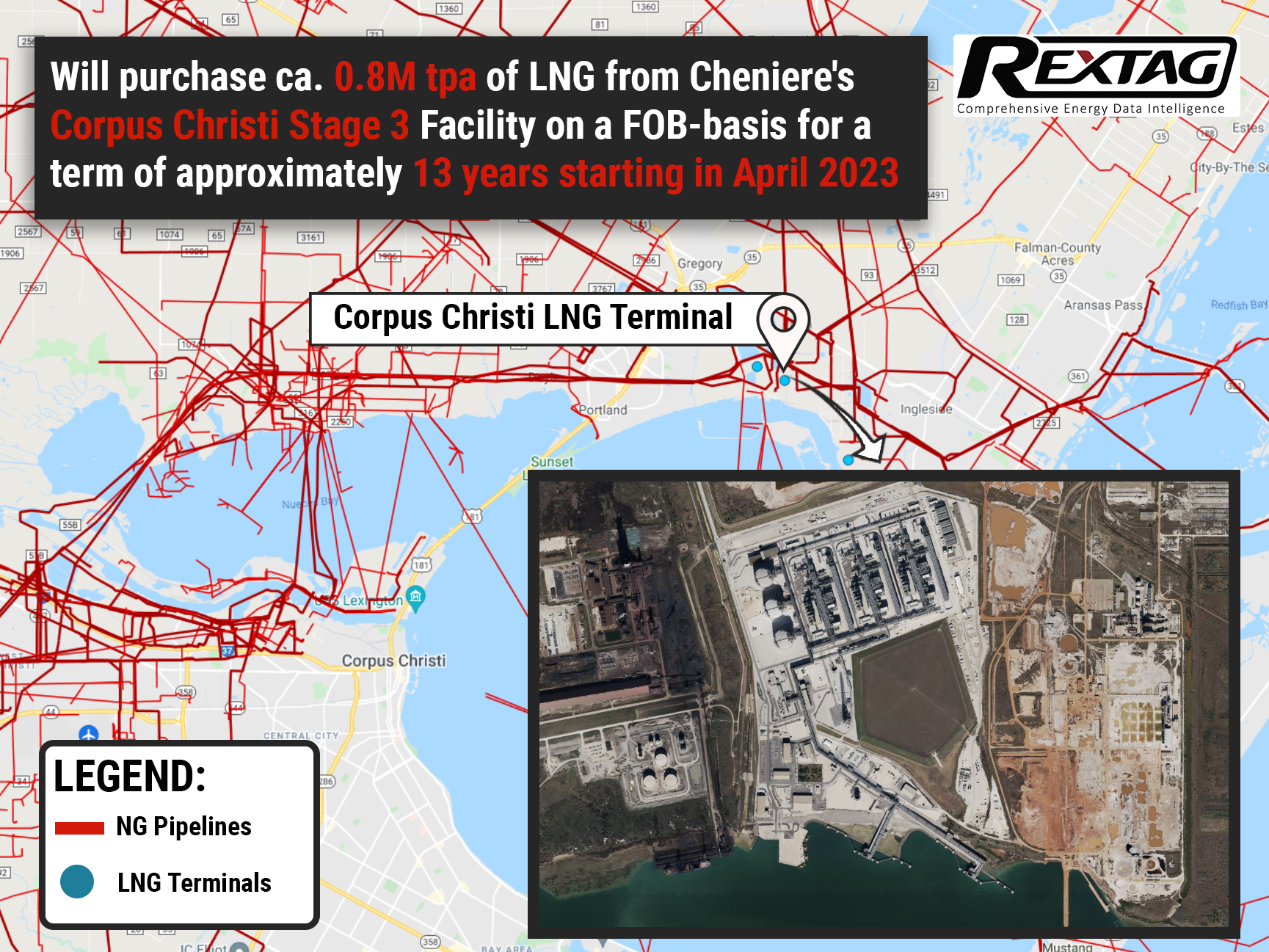Comprehensive Energy Data Intelligence
Information About Energy Companies, Their Assets, Market Deals, Industry Documents and More...
13 years is not long enough: Glencore and Cheniere Sign Long-Term LNG Deal
11/16/2021
A liquefied natural gas (LNG) binding sale and purchase agreement (SPA) has been concluded between Cheniere Energy Inc. and Glencore plc.
Earlier last month, Cheniere announced that Glencore had entered into a free-on-board agreement with Cheniere Marketing for approximately 0.8 million tons of LNG per annum, starting in April 2023 for a period of 13 or more years.
LNG is sold per the SPA at a price index based on the Henry Hub price plus a fixed liquefaction fee.
With the signing of this long-term transaction, Cheniere solidifies its position as a global LNG provider, and the company looks forward to a successful long-term relationship with Glencore, one of the world's biggest commodities producers and a leading player in the global LNG market.
This SPA demonstrates the commercial momentum Cheniere has been enjoying and marks another important milestone in contracting LNG capacity, as the company lays the groundwork for a final investment decision on Corpus Christi Stage 3, which Cheniere expects to occur next year.
A total nominal production capacity of approximately 10 mtpa is being planned for Corpus Christi Stage 3 with up to seven midscale liquefaction trains. And all regulatory approvals have been received already.
Adding fuel to the deal, China Petroleum & Chemical Corp., a state-owned company, also signed two contracts last week to purchase LNG from a proposed Louisiana LNG project being developed by U.S. LNG company Venture Global.
Natural gas is now a critical part of a growing global economy, and Cheniere Energy, Inc. is the world's largest producer and exporter of LNG in the United States. The company is a full-service LNG provider, dealing with gas procurement and transportation, liquefaction, vessel chartering, and LNG delivery.
Chenieres’ Sabine Pass and Corpus Christi LNG plants on the Gulf Coast of the United States represent one of the largest LNG liquefaction platforms in the world, with a maximum production capacity expected to be 45 million tons per year. Cheniere is also exploring the potential of expanding its liquefaction operations and other projects within the LNG value chain. The company is located in Houston, Texas, and has offices in London, Singapore, Beijing, Tokyo, and Washington, D.C.
Glencore, for its part, is one of the world's largest globally diversified natural resource companies, which was founded in the 1970s as a trading company. Today, it is a major producer and marketer of commodities, comprising around 150 mining, metallurgical, and oil production assets with 135,000 people employed worldwide.
If you are looking for more information about energy companies, their assets, and energy deals, please, contact our sales office mapping@hartenergy.com, Tel. 619-349-4970 or SCHEDULE A DEMO to learn how Rextag can help you leverage energy data for your business.
Pivot to the South: LNG Plants Under Development by Sempra Energy in Louisiana and Mexico
![$data['article']['post_image_alt']](https://images2.rextag.com/public/blog/Pivot_LNG_Plants_Development_Sempra_Energy_Louisiana_Mexico.png)
Sempra Energy would develop the 4.0-mmtpa Vista Pacifico LNG export facility located next to the company's Terminal for Refined Products in Topolobampo in a bid to provide gas from the Permian basin in Texas and New Mexico to Asian markets. Once marketing begins, Sempra's management expects Vista Pacifico to be oversubscribed.
Expansion Is The Goal: Ironwood II Completes Asset Merger And Assumes Management of Nuevo Midstream Dos’ Eagle Ford Assets
![$data['article']['post_image_alt']](https://images2.rextag.com/public/blog/Ironwood-II-Completes-Asset-Merger-And-Assumes-Management-of-Nuevo-Midstream-Dos-Eagle-Ford-Assets.png)
Ironwood Midstream expanded its operations in the Eagle Ford region through its merger with Nuevo Midstream. Thanks to this, Ironwood II has increased its crude oil and natural gas throughput capacities in the famous shale to approximately 400,000 bbl/d and 410 MMcf/d, respectively. With 390 miles of pipelines, the company manages 245,000 acres of dedicated land.
![$data['article']['post_image_alt']](https://images2.rextag.com/public/blog/328_Blog_Why Are Oil Giants Backing Away from Green Energy Exxon Mobil, BP, Shell and more .jpg)
As world leaders gather at the COP29 climate summit, a surprising trend is emerging: some of the biggest oil companies are scaling back their renewable energy efforts. Why? The answer is simple—profits. Fossil fuels deliver higher returns than renewables, reshaping priorities across the energy industry.
![$data['article']['post_image_alt']](https://images2.rextag.com/public/blog/327_Blog_Oil Market Outlook A Year of Growth but Slower Than Before.jpg)
The global oil market is full of potential but also fraught with challenges. Demand and production are climbing to impressive levels, yet prices remain surprisingly low. What’s driving these mixed signals, and what role does the U.S. play?
![$data['article']['post_image_alt']](https://images2.rextag.com/public/blog/326_Blog_USA Estimated Annual Rail CO2 Emissions 2035.jpg)
Shell overturned a landmark court order demanding it cut emissions by nearly half. Is this a victory for Big Oil or just a delay in the climate accountability movement?